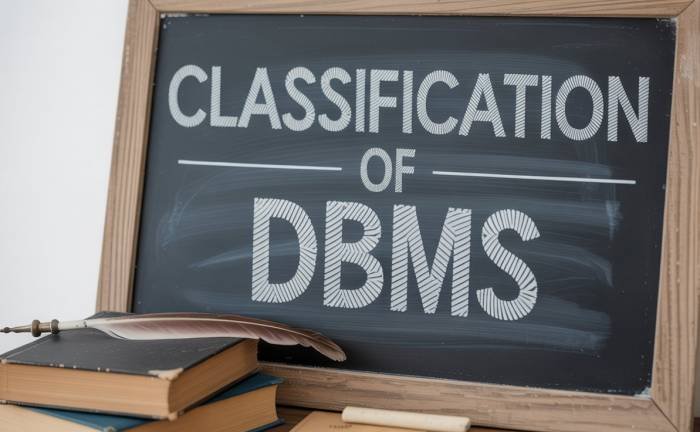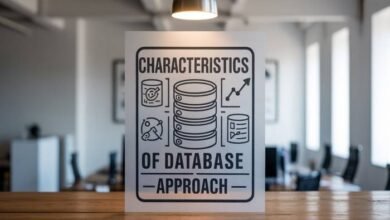Exploring the Classification of DBMS: Hierarchical, Network, Relational & More

What is a DBMS and Why Should You Care?
Hey, ever wonder how companies keep data tidy? I’ll explain it simply. A Database Management System (DBMS) is software that organizes data for easy access. Knowing the classification of DBMS helps you pick the best tool. I’ve worked with databases for years and seen the right choice boost projects. Let’s check out types like hierarchical and relational.
The classification of DBMS shows how data is stored. Each type, like NoSQL, has strengths. I once helped a startup use a relational DBMS for customer data. This guide explains their uses. You’ll learn why they matter. Ready to start?
How Does a Hierarchical DBMS Work?
Ever thought of data like a family tree? A Hierarchical DBMS uses a parent-child setup. I’m thrilled to share its perks. I’ve used databases a lot, and I’ll show its role in the classification of DBMS. Let’s dive in.
Data in a hierarchical DBMS is like a tree. Each parent connects to kids. I used IBM’s IMS for a client’s files—it was fast for simple tasks. It’s great for fixed data, per IBM’s guide. But it’s stiff for complex links. It fits specific needs.
It’s quick for easy queries but hard to change. You might redo the whole system. It’s not great for flexible apps. Knowing its spot in the classification of DBMS helps you choose. I’ve seen it shine for set data. Pick the right tool.
Why Was the Network DBMS Made?
Curious about complex data links? The Network DBMS fixes hierarchical limits. I’ve used these systems, and I’ll share their role in the classification of DBMS. You’ll see what they do best. Let’s explore.
Unlike a hierarchical, a Network DBMS links records like a web. I helped a logistics firm use IDS/2 for supply chains—great for connected data. It handles many links per database journal. But it’s complex. It’s good for tricky systems.
It’s strong for complex links but needs skill. Queries can be tough. It’s rare now, but useful for some tasks. Its place in the classification of DBMS guides choices. I’ve seen it work in special projects. It’s about connections.

Why Do People Love Relational DBMS?
Wonder why apps use relational databases? I’ve built with them a lot, and I’ll explain their role in the classification of DBMS. They’re easy and strong. Let’s see why they’re popular.
E.F. Codd made relational DBMS with tables and keys. MySQL and PostgreSQL are big names. I built a shop site with MySQL—queries were simple. It works for banks or stores, per Oracle’s rules. The classification of DBMS loves its ease. It’s a top pick.
It grows well and is easy to tweak. It’s weak with messy data. Its use shows it’s solid. Knowing its role in the classification of DBMS helps you pick. I’ve seen it change projects. It’s great for neat data.
How Does Object-Oriented DBMS Handle Data?
Wonder how databases manage complex stuff? Object-Oriented DBMS mixes coding and data. I’ve used it, and I’ll share its role in the classification of DBMS. You’ll learn its strengths. Let’s check it out.
This DBMS stores data as objects, like in coding. ObjectDB works for CAD or media. I used Versant for 3D modeling—it was smooth, per the IEEE journals. It uses coding tricks like inheritance. The classification of DBMS includes its code link. It’s great for developers.
It’s tough to set up and slow for simple data. You need coding skills. It’s great for special apps. Its place in the classification of DBMS helps with unique tasks. I’ve seen it rock complex jobs. Use it for big data.
Why is NoSQL So Popular Now?
Curious why new apps skip old databases? NoSQL DBMS handles flexible data. I’ve seen it work, and I’ll explain its rise in the classification of DBMS. You’ll see why it’s big for huge data. Let’s dive in.
NoSQL, like MongoDB, supports many data types and scales fast. I helped a social media startup use MongoDB for growth, per its docs. It skips strict rules. The classification of DBMS loves its flexibility. It’s fast. NoSQL changes the game.
It may lose some accuracy for speed, not great for banks. Its types offer choices. Developers love its growth. Its role in the classification of DBMS fits new needs. I’ve seen it handle big data easily. It’s awesome for active apps.
How Do Other DBMS Types Fit In?
What else is out there for databases? Special DBMS like Graph or Time-Series have roles. I’ll share their spot in the classification of . You’ll see their unique uses. Let’s look at these gems.
Graph DBMS, like Neo4j, is great for links, like social apps. Columnar DBMS, like Redshift, helps analytics. Time-series, like InfluxDB, handles IoT, as I saw in finance, per its docs. Each fits the classification of DBMS. They’re great for specific jobs. Choose smart.
They need skills but shine in their areas. They’re rare but key. Their role in the classification of helps pick. I’ve seen Graph DBMS boost network tasks. They’re great for data-heavy jobs. Pick for your needs.
Conclusion
The classification of DBMS—hierarchical, network, relational, object-oriented, and NoSQL—gives you tools for data. Each fits certain tasks, from neat to big systems. I’ve seen their power as a database pro. Knowing their strengths helps you pick the best for your work.
FAQs
Why is relational DBMS popular in the classification of DBMS?
Relational DBMS is popular in the classification of DBMS because it uses tables to store data, making it easy to search, sort, and link records.
What is object-oriented DBMS in the classification of DBMS?
Object-oriented DBMS stores data as objects, like in programming. It is a newer type in the classification of DBMS used for complex data.
Which classification of DBMS is best for large data?
Relational DBMS is often best for large amounts of data. In the classification of DBMS, it handles big tables and supports fast queries and updates.




